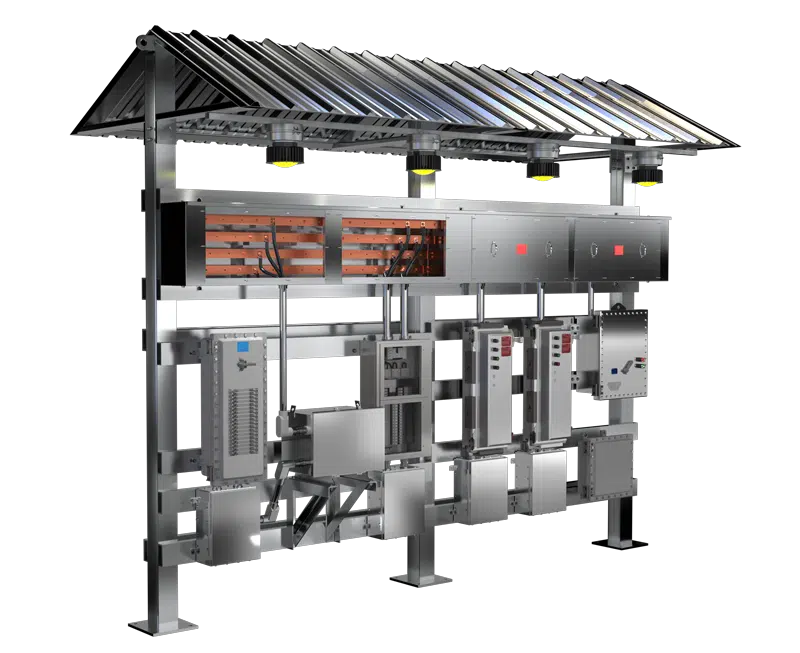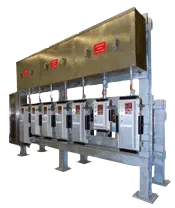
Hazardous location (HazLoc) switchracks, widely used in industries such as petrochemical, oil & gas, and chemical processing, require meticulous attention throughout their lifecycle—from initial installation through ongoing inspection and maintenance. Proper management of this lifecycle is essential not only to maintain safety and compliance but also to maximize reliability and operational efficiency. Drawing upon IEEE standards and insights from the practical experience of Spike Electric Controls, this comprehensive guide outlines critical considerations and best practices across every lifecycle stage of HazLoc switchracks.
Pre-Installation Considerations
Before installation, detailed planning and preparation are crucial. Engineers must verify that the switchrack design matches the intended hazardous location classification, whether Class I, Division 1 or Division 2. This involves reviewing detailed project specifications, confirming equipment ratings, and ensuring the proper area classification.
Spike Electric Controls emphasizes pre-installation checks and site readiness as a key part of their process, ensuring all components—structural elements, conduit fittings, enclosures, and protective systems—meet IEEE, NEC, and UL standards before arriving onsite. This rigorous upfront preparation streamlines installation, minimizes onsite modifications, and significantly reduces project timelines.
Receiving and Installation Process
Upon arrival, the HazLoc switchrack should undergo immediate inspection. This includes verifying that shipment contents match purchase specifications, checking the physical condition of structural members, bus ducts, conduit systems, and confirming no shipping damage has occurred. Spike Electric Controls performs factory acceptance testing prior to shipment, ensuring a trouble-free and efficient field installation.
Installation itself requires precision. Proper equipment leveling, bolting structural members securely, correctly mounting and terminating conduits, and installing explosion-proof enclosures must follow exact specifications. Attention to detail here is vital because errors during installation can lead to safety hazards or costly rework.
Commissioning and Energizing
After the switchrack is securely installed, comprehensive commissioning and electrical testing follow. IEEE recommends verifying grounding integrity, bus and cable insulation resistance, proper torque application for electrical connections, and functional testing of protective devices and motor starters.
Spike Electric ensures each switchrack is pre-tested in their facility, but comprehensive onsite testing remains essential. Detailed coordination studies confirm that protective devices will function correctly under fault conditions. Functional testing, involving simulated operational conditions, ensures that all control systems, interlocks, and protective devices are operating as designed.
Operational Best Practices
Once operational, maintaining consistent procedures for operating HazLoc switchracks is vital. IEEE and NFPA 70E stress the importance of clearly documented operational protocols and emergency response procedures. Operators and maintenance personnel must understand proper startup and shutdown sequences, isolation procedures for maintenance, and steps for handling abnormal conditions or faults.
Spike Electric Controls provides detailed documentation and training support, helping clients establish robust operational procedures that prioritize safety and reliability. Clear signage, easy-to-access emergency shutdown mechanisms, and comprehensive documentation further ensure operational safety.
Scheduled Inspection and Maintenance
Routine inspection and maintenance form the backbone of reliable HazLoc switchrack operation. IEEE and NFPA 70B standards specify regular intervals for inspecting critical components including structural integrity, conduit seals, electrical connections, and protective devices. Infrared thermal imaging of connections, insulation resistance testing, and grounding system inspections should be performed consistently.
Spike Electric designs their switchracks for ease of maintenance, with accessible layouts, corrosion-resistant materials, and clearly labeled components. Regular maintenance schedules and clear, concise maintenance instructions facilitate efficient upkeep, reduce downtime, and extend operational life.
Managing Corrosion and Environmental Challenges
HazLoc environments present significant corrosion challenges. Regular inspections should assess corrosion impacts on structural elements, bus ducts, and enclosures. IEEE guidelines recommend periodic application of corrosion inhibitors, maintenance of protective coatings, and replacement of heavily corroded components.
Spike Electric proactively addresses these environmental factors by selecting corrosion-resistant materials, such as galvanized steel or aluminum, for structural members and enclosures. Additionally, they recommend regular corrosion assessments and preventive maintenance procedures tailored specifically to site environmental conditions.
Safety Protocols and Personnel Training
Safety is paramount when working with HazLoc switchracks. IEEE and NFPA standards underscore the necessity of comprehensive personnel training, covering electrical safety protocols, arc-flash protection measures, and hazardous area safety practices. Ongoing training programs ensure personnel remain aware of best practices and evolving safety standards.
Spike Electric actively supports their clients by providing detailed safety documentation, on-site training sessions, and resources to maintain up-to-date safety practices. This commitment ensures that safety remains embedded in the operational culture, significantly reducing accident risks and ensuring compliance.
Emergency Preparedness and Response
Effective emergency preparedness plans are critical in HazLoc environments. Facilities must have clear procedures for responding to electrical faults, arc flash incidents, or structural failures. Emergency drills, clear signage, and readily available personal protective equipment (PPE) are essential.
Spike Electric incorporates emergency preparedness into their design approach, clearly marking emergency shutdown locations and providing detailed emergency response documentation. Facilities are encouraged to conduct regular emergency drills, maintain easily accessible PPE, and continuously evaluate their emergency response effectiveness.
End-of-Life and Replacement Planning
Even with exceptional maintenance, switchracks eventually reach end-of-life. IEEE standards suggest regular assessments of equipment conditions to plan timely replacements, avoiding unplanned downtime or operational disruptions.
Spike Electric Controls advises clients to adopt proactive lifecycle management practices, including monitoring performance trends, conducting detailed condition assessments, and planning replacements strategically. This approach optimizes capital expenditure planning and ensures continuous operational reliability.
Conclusion: Comprehensive Lifecycle Management
Properly managing the lifecycle of HazLoc switchracks—from installation through ongoing inspection, maintenance, and eventual replacement—ensures safety, reliability, and operational efficiency. By adhering to IEEE guidelines and leveraging Spike Electric Controls’ proven practices, facilities can confidently navigate each lifecycle stage.
Understanding and implementing these lifecycle management strategies are critical responsibilities for engineers, facility operators, and maintenance teams alike. Through meticulous planning, diligent maintenance, rigorous safety protocols, and strategic lifecycle management, HazLoc switchracks deliver safe, reliable performance throughout their service life.


